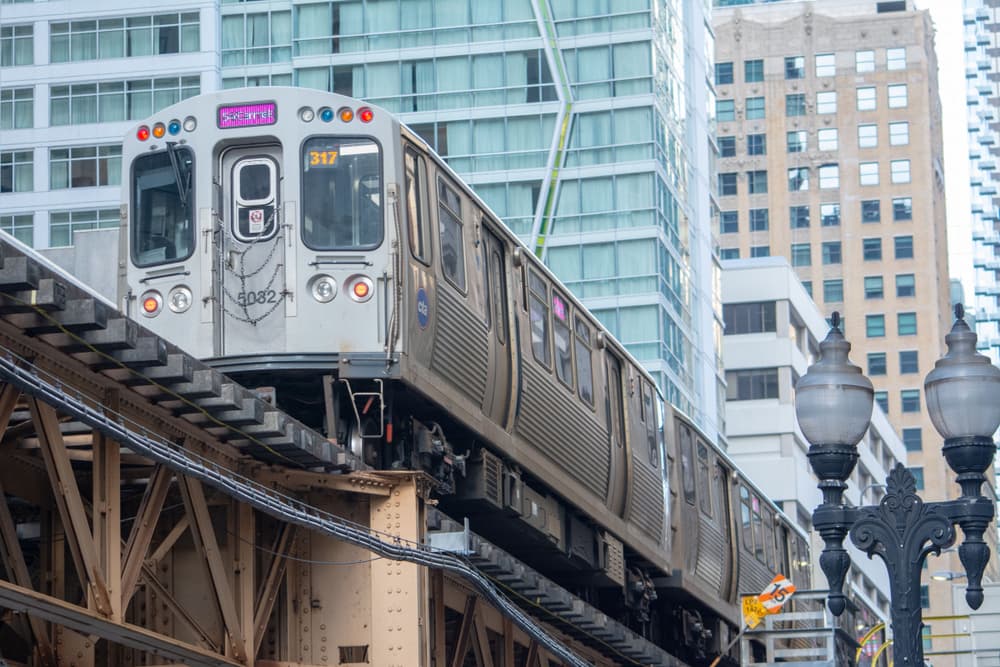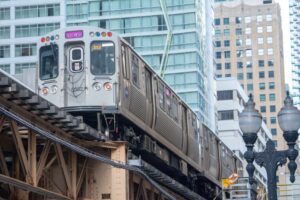Dozens of people were injured on November 16, 2023, when a Chicago commuter train collided with a snow plow in the 7500 block of North Paulina Street about 300 yards from the Howard Station.
Seven Chicago Transit Authority (CTA) personnel and 31 civilians, including four children, were aboard the train when the accident occurred. At least 23 people were taken to area hospitals with injuries ranging from fair to serious.
CTA temporarily suspended the Red, Purple, and Yellow lines until authorities could clear the accident scene.
Authorities say the Yellow Line train was “traveling at its normal speed” when it crashed into the “slow-moving” snow plow. The cause of the crash is under investigation.
Anyone injured in this or any other Chicago-area train accident should consult a train accident lawyer as soon as possible. Train accident victims may recover compensation for their accident-related medical bills and other losses.
Chicago’s History of Commuter Train Wrecks
The CTA accident comes just over a year after Chicago marked the 50th anniversary of the deadliest commuter train crash in the city’s history. On Oct. 30, 1972, an Illinois Central train overshot the 27th Street station, reversed, and collided with another Illinois Central train barreling toward it. The train cars telescoped into each other in a mass of twisted metal and debris. The crash injured approximately 350 people and killed 45.
Train accidents aren’t common in the U.S., but they happen more often than people think. Illinois often ranks among the top states for train accidents. According to the Federal Railroad Administration, each year in Illinois, over 175 train accidents cause 40 train-related deaths.
With its heavy reliance on public transit, Chicago sees a higher-than-usual number of train accidents each year. According to the Illinois Commerce Commission, in the previous six years combined, 252 train collisions took place at public, private, and pedestrian crossings across Cook County. This includes train crashes into other trains, trains colliding with other vehicles, and train derailments.
Chicago Relies Heavily on Public Transit
Chicago has a long and rich history when it comes to train transportation, and its significance in this regard is multifaceted. The city was recently highlighted as the “U.S. Railroad Capital ” by Trains Magazine due to its central location within the United States and the many freight and passenger trains coursing through the city.
Chicago became a major transportation hub in the 19th century as railroads expanded westward, connecting the East Coast with the emerging western regions. The convergence of multiple rail lines made it a crucial interchange point for freight and passenger traffic. It became a strategic location as a transportation hub and continues to have a profound impact on its economic development.
Chicago’s iconic Union Station opened in 1925. This historic railway terminal continues to serve as a major transportation hub, hosting Amtrak (intercity rail service), Metra (commuter rail), and various bus services.
The Chicago Metra Rail System also services the metropolitan area with 242 stations and 11 separate rail lines. Metra has become the fourth-busiest commuter rail system in the country, with over 80 million passengers annually.
Chicago is renowned for its elevated rapid transit system, commonly known as the L (short for “elevated”).
The Chicago L is one of the world’s oldest and largest rapid transit systems. It has provided efficient and accessible public transportation within the city and its suburbs. The Chicago Transit Authority (CTA), the second-largest public transit authority in the country, oversees the eight L train lines. The system connects the city through above-ground, street-level, and subway trains and serves 145 rail stations.
Common Causes of Train Accidents in Chicago
Train accidents can result from a combination of human error, technical failures, and external conditions.
Here are some common causes of train accidents.
Human Errors in Train Operation
- Operator Mistakes: Train operators misjudging signals, exceeding speed limits, or making critical errors.
- Communication Breakdowns: Issues arising from miscommunication between train operators, dispatchers, and other personnel involved in train control.
Track Issues and Infrastructure Challenges
- Defective Tracks and Switches: Poorly maintained or faulty tracks leading to derailments or accidents.
- Weather Conditions: Impact of adverse weather conditions such as heavy rain, snow, or fog on track safety and visibility.
Equipment Failures
- Mechanical Malfunctions: Failures in the train’s mechanical components, including brakes and coupling systems.
- Signal Failures: Malfunctions in signaling equipment that can lead to misunderstandings between operators and control centers.
Steps to Take After a Train Accident
If you’re in a train accident in Chicago or elsewhere, protect your interests and well-being. Here are general steps to consider if you’re in a train accident:
1. Seek Medical Attention
Make your health and safety the top priority. Seek immediate medical attention for any injuries. Even if you feel fine initially, some injuries may manifest later, so get a thorough medical evaluation.
2. Report the Accident
Report the accident to the appropriate authorities. In the case of a train accident, this may involve contacting local law enforcement, railroad officials, and relevant transportation agencies.
3. Gather Information
Collect information about the accident, such as the date, time, location, and details of what happened. Take photos if possible. Get contact information from any witnesses.
4. Cooperate with Authorities
Work with law enforcement and other authorities conducting investigations. Provide accurate and truthful information about the incident.
5. Preserve Evidence
If it’s safe to do so, preserve evidence at the scene. This could include photographing the surroundings, documenting the condition of safety equipment, and noting any potential factors that may have contributed to the accident.
6. Document Injuries and Damages
Keep records of your injuries, medical treatments, and related expenses. Document any property damage or other losses resulting from the accident.
7. File Insurance Claims
If applicable, notify your insurance company and the railroad company of the accident. Be cautious when communicating with insurance adjusters, and hire personal injury attorney before providing statements.
8. Consult a Lawyer
An attorney can explain the applicable laws and statutes of limitations for filing a claim and can provide guidance on your rights and the legal process.
A Lawyer Can Help You Get the Compensation You Need

Chicago relies heavily on its train services. But when accidents happen, they can devastate those involved and their families. These traumatic events often result in massive, catastrophic injuries.
If you or a loved one were a passenger, train operator, railroad worker, or hazardous materials employee for a railroad company, and suffered injuries in a train accident, discuss your case during a free consultation with the personal injury attorneys at Midwest Injury Lawyers. You may recover compensation for your medical bills, lost earnings, and other damages.
Contact us today to hear how we can help you get the compensation you deserve.


